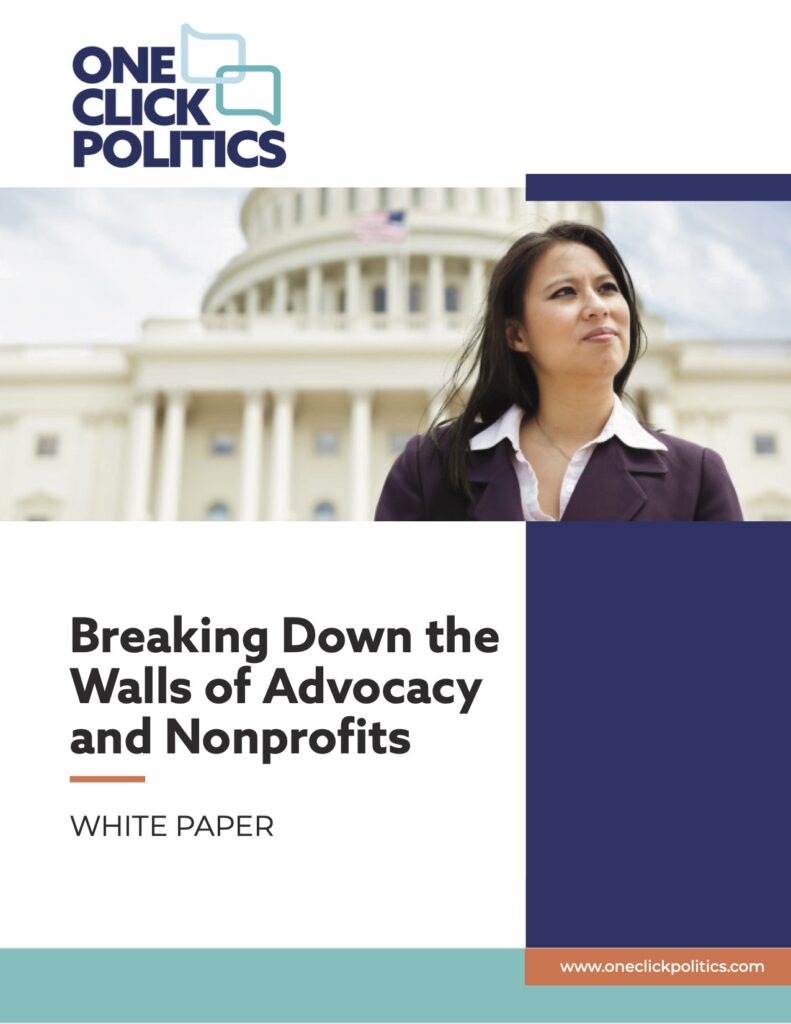The following excerpt from our white paper “Breaking Down the Walls of Advocacy and Nonprofits” dispels some of the myths about advocacy for nonprofits. Download the white paper here to read the full text!
Myth: Nonprofits are prohibited from engaging in advocacy.
FACT
Nonprofits are allowed to engage in advocacy activities with certain limitations. The restrictions are based on tax-exemption status but in general, nonprofits can advocate for policy changes, raise awareness around social issues, and participate in public discourse.
- 501c3: can lobby with restrictions.
- 501c4: can lobby with fewer restrictions.
- 501c6: can lobby without restrictions.
Myth: Advocacy is too expensive for nonprofits.
FACT
Advocacy can be cost-effective for nonprofits, especially when leveraging resources such as volunteer time, partnerships with similar organizations, and digital advocacy tools. Nonprofits can also access funding opportunities specifically designated for advocacy efforts. Advocacy does not have to cost a fortune to be effective.
Myth: Nonprofits must remain neutral on political issues.
FACT
While nonprofits may not be able to support or oppose specific candidates for public office, they can advocate for policies and issues related to their missions. Nonpartisan advocacy allows nonprofits to address social and community needs without engaging in partisan politics.
Myth: Advocacy is only for large nonprofits with significant resources.
FACT
Advocacy efforts can be tailored to fit the capacity and resources of nonprofits of all sizes. Even small organizations can make a difference by engaging their stakeholders, building coalitions, and utilizing grassroots advocacy strategies. We’ve all been given a voice; it’s how we choose to use it that matters.
Myth: Advocacy is only effective at the national level.
FACT
Advocacy can be impactful at the local, state, and national levels. Nonprofits can focus their advocacy efforts on issues relevant to their communities, collaborate with local stakeholders, and influence policy decisions at various levels of government. The most important aspect of advocacy is making sure you’re being heard.
Myth: Nonprofits risk losing donors by engaging in advocacy.
FACT
Quite the opposite actually. Advocacy can attract donors who are passionate about social change and aligned with a nonprofit’s mission. By effectively communicating the impact of your advocacy efforts, your nonprofit can engage donors who value organizations that drive systemic change.
Myth: Nonprofits cannot measure the impact of their advocacy efforts.
FACT
Nonprofits can measure the impact of their advocacy efforts using metrics such as policy changes, media coverage, public awareness, and stakeholder engagement. By tracking outcomes and evaluating effectiveness, nonprofits can demonstrate the value of their advocacy work to stakeholders and funders.
